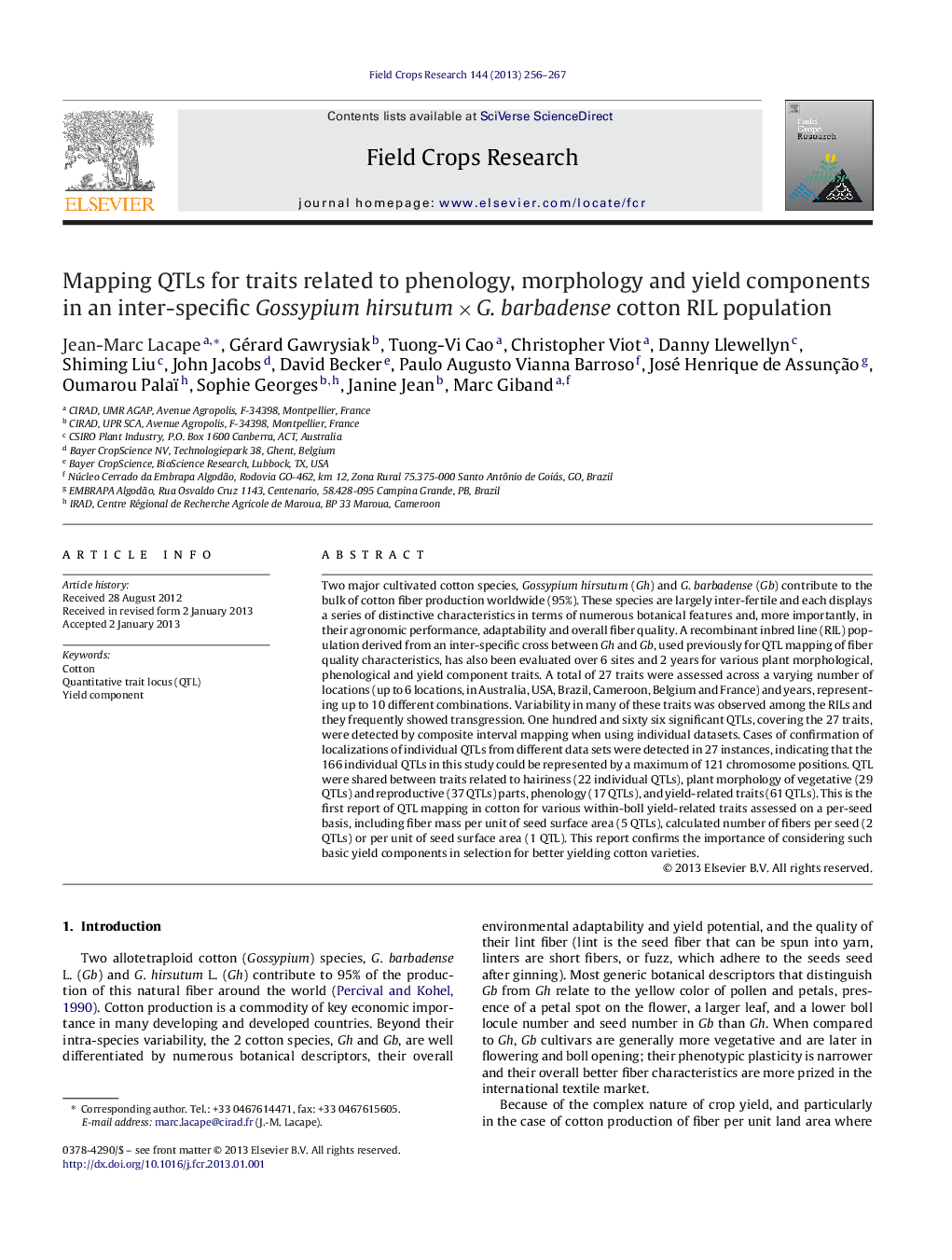| Article ID | Journal | Published Year | Pages | File Type |
|---|---|---|---|---|
| 4510246 | Field Crops Research | 2013 | 12 Pages |
Two major cultivated cotton species, Gossypium hirsutum (Gh) and G. barbadense (Gb) contribute to the bulk of cotton fiber production worldwide (95%). These species are largely inter-fertile and each displays a series of distinctive characteristics in terms of numerous botanical features and, more importantly, in their agronomic performance, adaptability and overall fiber quality. A recombinant inbred line (RIL) population derived from an inter-specific cross between Gh and Gb, used previously for QTL mapping of fiber quality characteristics, has also been evaluated over 6 sites and 2 years for various plant morphological, phenological and yield component traits. A total of 27 traits were assessed across a varying number of locations (up to 6 locations, in Australia, USA, Brazil, Cameroon, Belgium and France) and years, representing up to 10 different combinations. Variability in many of these traits was observed among the RILs and they frequently showed transgression. One hundred and sixty six significant QTLs, covering the 27 traits, were detected by composite interval mapping when using individual datasets. Cases of confirmation of localizations of individual QTLs from different data sets were detected in 27 instances, indicating that the 166 individual QTLs in this study could be represented by a maximum of 121 chromosome positions. QTL were shared between traits related to hairiness (22 individual QTLs), plant morphology of vegetative (29 QTLs) and reproductive (37 QTLs) parts, phenology (17 QTLs), and yield-related traits (61 QTLs). This is the first report of QTL mapping in cotton for various within-boll yield-related traits assessed on a per-seed basis, including fiber mass per unit of seed surface area (5 QTLs), calculated number of fibers per seed (2 QTLs) or per unit of seed surface area (1 QTL). This report confirms the importance of considering such basic yield components in selection for better yielding cotton varieties.
► A population of cotton RILs tested on 4 continents and several years ► Fist report in cotton of QTLs for earliness and lint percentage ► First report in cotton of QTLs for within-boll yield components ► Weight of fiber per seed is key component of fiber yield variation ► Number of fibers per unit of seed surface area is key component of yield variation.
